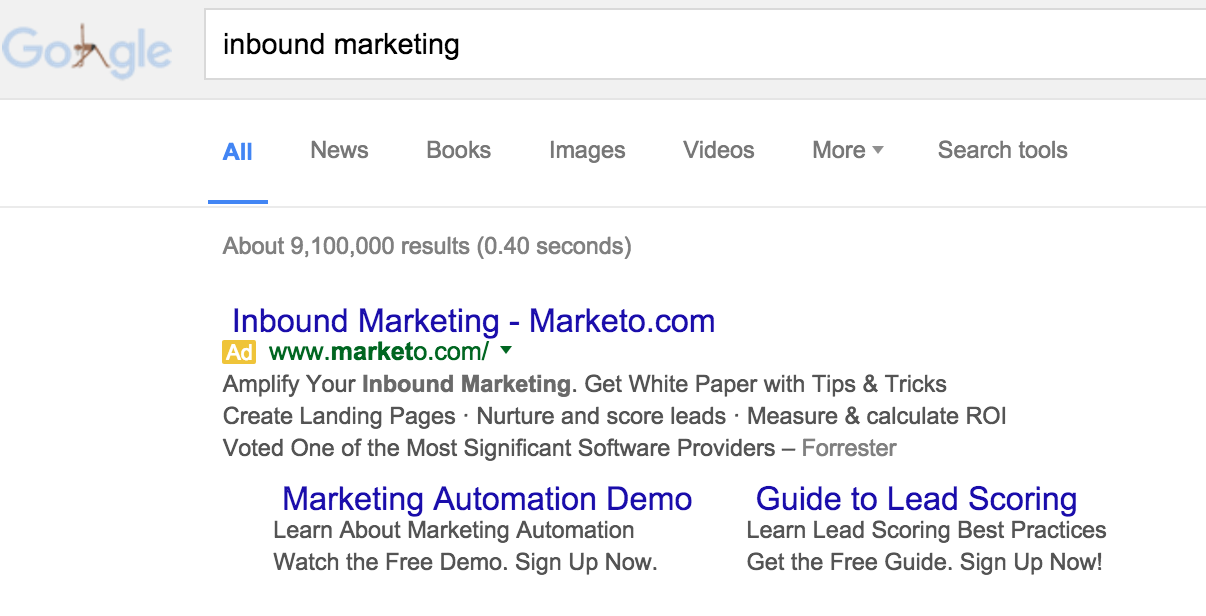An Inbound Marketing Strategy: Why Every Business Needs One

If you’re reading this and you own a business, chances are you need an inbound marketing strategy. Think of it this way: over 80% of people start shopping by searching for information online. This means that if you want to grow your business, you need to grow your business online.
Outbound marketing vs. inbound marketing
Digital marketing is very different than traditional marketing. Advertising over radio and television and in newspapers and magazines involves a lot of preliminary market research. Advertisers need to know who is listening to a radio station, watching a television channel, or subscribing to a newspaper or magazine. Based on these demographics, broadcasters and publishers then sell space or air time to advertisers, who then sell ads to businesses who are trying to reach customers that fit those demographics. This marketing is outbound: you are trying to spread your message far and wide and hope it will hit the mark.
Inbound marketing involves using internet technologies like social media, search engines, and pay per click (PPC) advertising to target audiences when they use these technologies.

Inbound marketing includes the following:
- An organizational website: a website that contains information about your business, including product pages, a blog, a newsletter, and an “about us.”
- Search Engine Optimization (SEO): optimizing your website with keywords and valuable content that improve its rank in results that users see when they search for products and services like yours.
- Social media: profiles, pages, and campaigns for your business on popular platforms such as Twitter, Facebook, and Instagram.
- Analytics: keeping track of key metrics such as the number of new visitors to your website, the number of repeat visitors to your website, the number of people who click on or share your content, the number of people who follow you on social media, and the number of people who mention your products and services online.
Benefits of inbound marketing
Rather than hoping customers will see your advertisements, inbound helps you put advertisements right in front of customers. When a person flips through a newspaper or magazine, the ad copy they see is static. Whether the person is young or old, a hobbyist or a professional, a doctor or a kindergartner, everyone sees the same ad. You hope the person flipping through pages or channels is your target customer, but how do you know? You hope the person is looking at your ads and considering buying from you, but how do you know?
Ads on the internet are interactive. They can be clicked on, shared, and linked to product pages or shopping carts. Internet ads allow you to put content in front of the customers you want to reach. They also can take a wide variety of forms, from paid ads that show up in search results to blog posts focusing on a particular topic to landing pages that direct website visitors to interact with your products. There are simply more opportunities for customers to interact with your content online, including by sharing it with their friends on social media.
How do your customers find you?
The key to thinking about inbound is answering the question: how do your customers find you? To answer this question, think about the last time you were in the market for a particular product or service. Did you pull out the yellow pages? Do you even know where your phone book is right now? Chances are, you pulled out a smartphone or laptop and searched for a keyword. You may or may not have included your location in your search. Most search engines now prioritize local content first.
Now think about the last time a friend or colleague on social media was complaining or raving about a particular brand. Did that influence your view of the brand? If so, you are not alone. A recent Harvard study found that a one-star increase on Yelp is equivalent to a 5-9% increase in revenue for the business being reviewed. Social media is the new word-of-mouth advertising. People are talking on social media all the time. Is your business part of the conversation?
Leverage inbound marketing to generate more leads and to convert those leads to customers
More than anything, inbound marketing helps you cultivate leads. When someone sees a traditional ad, the business being advertised doesn’t get a notification that their ad has been seen. They simply have to balance the cost of running traditional ads against the expected return on investment. With inbound, you get a minute-by-minute update on how your strategy is performing. Website not pulling in enough visitors? Try adding new content. No one interacting with you on social media? Try a cheap paid ad that allows you to target specific types of people. Inbound allows you to tweak your strategy to consistently improve it over time.
If you know what you’re doing, you can also use this information to consistently convert leads to customers. You can test your content with different types of people to see what content is most likely to convince people to buy. You can update online ad copy in a matter of minutes and can even run multiple ads at the same time to see which ones perform the best.
The most important thing you need to know about inbound, however, is that it’s only going to grow in importance. People are growing tired of seeing t.v. commercials that interrupt their favorite shows. Millennials and other generations that have been raised on the internet are turning into prime consumers. These consumers subscribe to services like Hulu and Netflix to avoid advertising altogether. They switch the channel on the radio when the music stops and the advertising starts. They flip past full-page ads in magazines that cost businesses thousands of dollars to run.
The internet caters to people by delivering on-demand information. Search engines deliver customized, prioritized ads and links. Social media places contextualized ad copy in discrete locations that don’t interrupt what users are doing. Banner ads on the tops of websites attract attention without forcing people to scroll past them to get to the content they are looking for.
The question isn’t: can you afford inbound marketing? It’s: can your business continue to grow without it?



When to Hire a Consultant: Solving Internal Problems Externally - Content Garden
April 6, 2016 @ 9:10 am
[…] you might want to hire a UX consultant. If you’re not used to thinking of marketing from an inbound perspective, then you might want to hire someone who is a talented digital […]